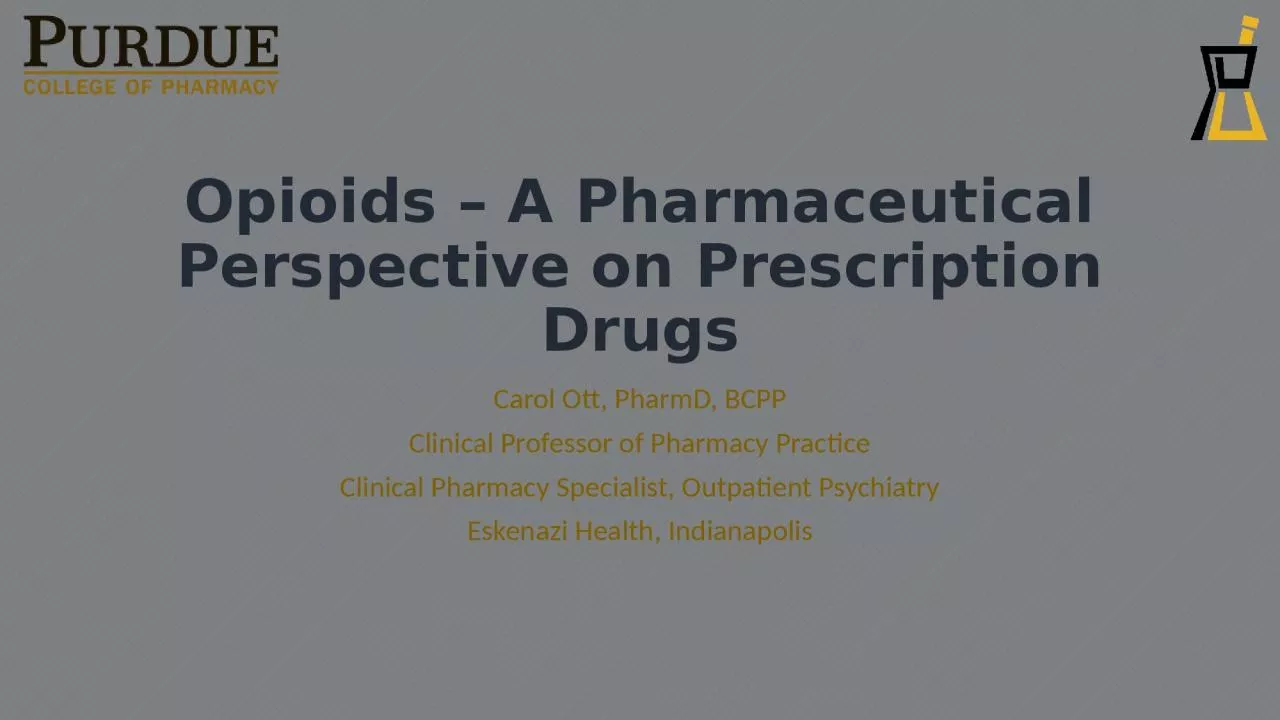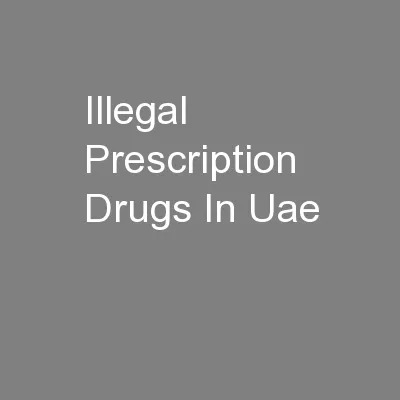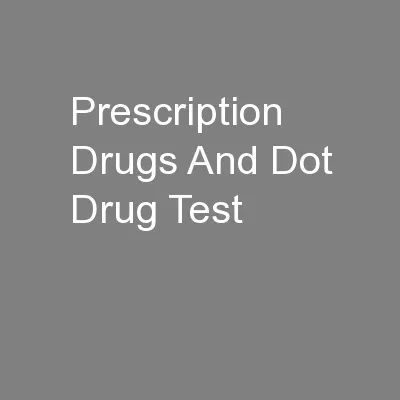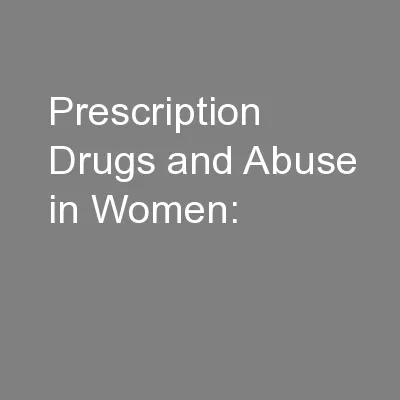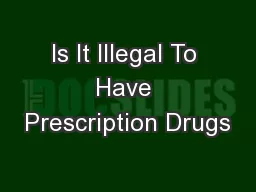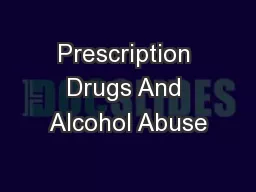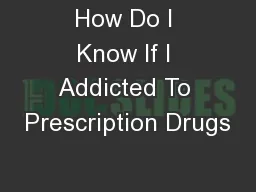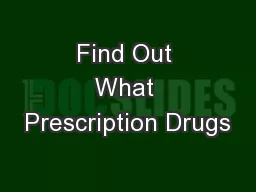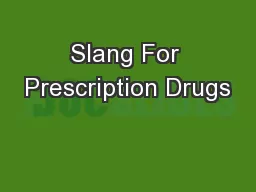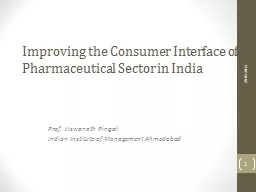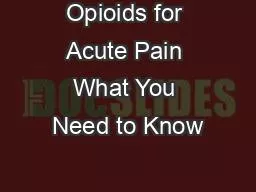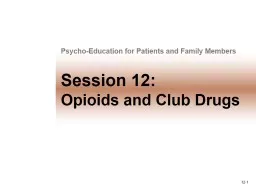PPT-Opioids – A Pharmaceutical Perspective on Prescription Drugs
Author : yvonne | Published Date : 2024-02-09
Carol Ott PharmD BCPP Clinical Professor of Pharmacy Practice Clinical Pharmacy Specialist Outpatient Psychiatry Eskenazi Health Indianapolis Disclosures The speaker
Presentation Embed Code
Download Presentation
Download Presentation The PPT/PDF document "Opioids – A Pharmaceutical Perspective..." is the property of its rightful owner. Permission is granted to download and print the materials on this website for personal, non-commercial use only, and to display it on your personal computer provided you do not modify the materials and that you retain all copyright notices contained in the materials. By downloading content from our website, you accept the terms of this agreement.
Opioids – A Pharmaceutical Perspective on Prescription Drugs: Transcript
Download Rules Of Document
"Opioids – A Pharmaceutical Perspective on Prescription Drugs"The content belongs to its owner. You may download and print it for personal use, without modification, and keep all copyright notices. By downloading, you agree to these terms.
Related Documents

